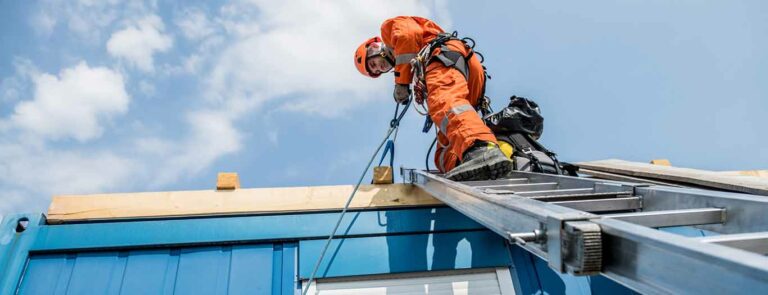The Only Guide to Roar Solutions
Wiki Article
The Basic Principles Of Roar Solutions
Table of ContentsSome Known Incorrect Statements About Roar Solutions Roar Solutions Fundamentals ExplainedAn Unbiased View of Roar Solutions
In order to secure setups from a possible explosion a method of analysing and identifying a potentially unsafe location is called for. The purpose of this is to make certain the appropriate option and installation of devices to ultimately protect against an explosion and to ensure security of life.
(https://sketchfab.com/roarsolutions)
No tools must be installed where the surface temperature level of the equipment is more than the ignition temperature of the offered hazard. Below are some common dirt hazardous and their minimum ignition temperature level. Coal Dust 380C 225C Polythene 420C (thaws) Methyl Cellulose 420C 320C Starch 460C 435C Flour 490C 340C Sugar 490C 460C Grain Dirt 510C 300C Phenolic Material 530C > 450C Aluminium 590C > 450C PVC 700C > 450C Residue 810C 570C The probability of the risk being existing in a focus high sufficient to trigger an ignition will differ from area to area.
In order to classify this danger an installment is split right into locations of threat depending upon the amount of time the dangerous exists. These locations are described as Zones. For gases and vapours and dusts and fibers there are three areas. Area 0 Area 20 A hazardous ambience is extremely most likely to be existing and may exist for extended periods of time (> 1000 hours each year) and even continuously Area 1 Area 21 A dangerous environment is feasible yet not likely to be present for lengthy durations of time (> 10 450 C [842 F] A category of T6 indicates the minimum ignition temperature is > 85 C [185 F] Hazardous location electrical devices possibly created for usage in higher ambient temperatures. This would showed on the score plate e.g. EExe II C T3 Ta + 60C( This means at 60C ambient T3 will certainly not be surpassed) T1 T1, T2, T3, T4, T5, T6 T2 T2, T3, T4, T5, T6 T3 T3, T4, T5, T6 T4 T4, T5, T6 T5 T5, T6 T6 T6 A T Class rating of T1 suggests the maximum surface temperature produced by the tool at 40 C is 450 C. Assuming the linked T Course and Temperature score for the equipment are proper for the area, you can constantly make use of a tool with a more rigid Department ranking than needed for the area. There isn't a clear response to this question however. It truly does depend upon the kind of equipment and what repairs require to be executed. Devices with details examination treatments that can't be done in the area in order to achieve/maintain third celebration rating. Should return to the factory if it is before the equipment's service. Field Repair Work By Authorised Worker: Complex screening might not be needed nonetheless certain procedures may require to be complied with in order for the devices to preserve its 3rd party ranking. Authorised workers have to be employed to do the work correctly Repair service have to be a like for like replacement. New part must be thought about as a straight replacement calling for no special screening of the devices after the repair work is complete. Each tool with a hazardous ranking need to be assessed independently. These are outlined at a high level below, however for even more detailed info, please refer directly to the guidelines.
Our Roar Solutions Ideas
The tools register is an extensive data source of equipment records that includes a minimum collection of fields to identify each item's area, technological criteria, Ex lover category, age, and ecological data. The ratio of Comprehensive to Close evaluations will certainly be figured out by the Devices Threat, which is analyzed based on ignition danger (the likelihood of a source of ignition versus the chance of a flammable atmosphere )and the unsafe area category( Zone 0, 1, or 2). Implementing a durable Risk-Based Inspection( RBI )method is vital for ensuring conformity and security in taking care of Electric Devices in Hazardous Locations( EEHA).
Roar Solutions Fundamentals Explained

In terms of eruptive risk, an unsafe area i thought about this is an environment in which an explosive environment exists (or might be anticipated to be present) in quantities that call for unique preventative measures for the building, installment and usage of devices. Roar Training Solutions. In this write-up we check out the difficulties encountered in the workplace, the threat control actions, and the needed proficiencies to function safely
These materials can, in particular problems, create explosive environments and these can have significant and terrible repercussions. Many of us are acquainted with the fire triangle eliminate any kind of one of the three components and the fire can not occur, however what does this mean in the context of harmful areas?
In many instances, we can do little regarding the levels of oxygen in the air, however we can have significant influence on resources of ignition, for example electric equipment. Harmful locations are documented on the unsafe area classification illustration and are determined on-site by the triangular "EX-SPOUSE" indication. Here, among various other crucial info, areas are divided into 3 kinds depending upon the risk, the possibility and duration that an explosive atmosphere will exist; Area 0 or 20 is deemed the most hazardous and Zone 2 or 22 is considered the least.
Report this wiki page